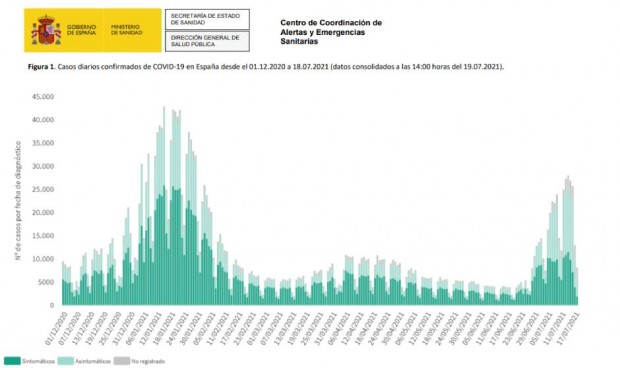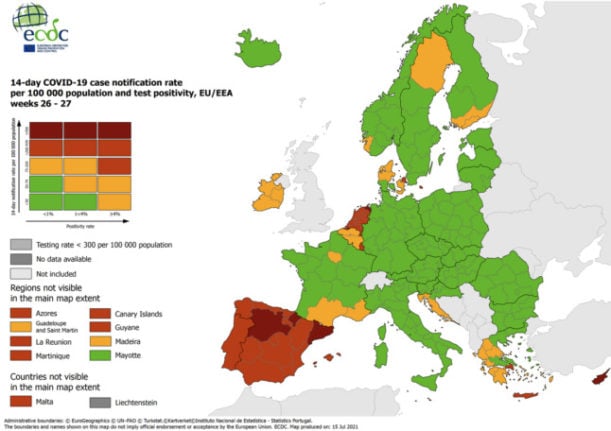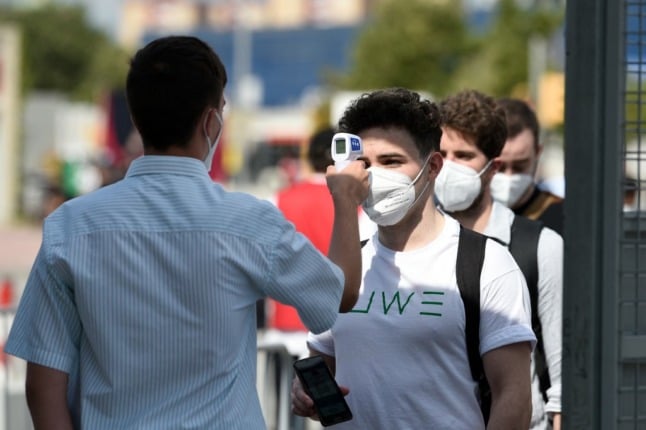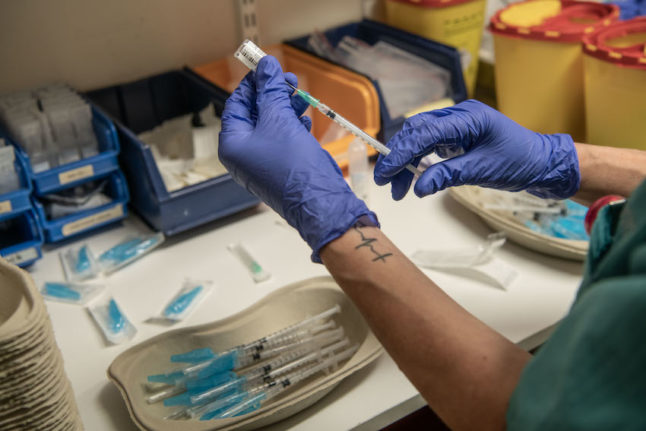As expected, the incidence of the coronavirus continued to grow over the past weekend in Spain, an infection rate which has been snowballing since the country’s fifth Covid wave began on July 22nd.
Back then, Spain’s national fortnightly infection rate was 92 cases per 100,000 people, but over the past month this figure has grown more than sixfold to the current 601 cases per 100,000 on July 20th.
On Monday evening, Spain’s Health Ministry reported 61,628 Covid-19 cases recorded from Friday to Sunday.

This took the incidence of the virus over the past 14 days up to 601 cases per 100,000 people, figures not seen since Spain’s third wave in late January when the infection rate peaked at 894 cases per 100,000 people.
The regions that have recorded the most cases over the three-day period are Catalonia, with 17,579 new infections, Andalusia with 8,038 cases and the Valencian region with 5,863.
The cumulative incidence continues to rise among Spain’s unvaccinated younger people, standing at 1,794 cases per 100,000 20 to 29 year olds, 1,488 cases for every 100,000 12 to 19 year olds and 799 infections per 100,000 in the 30 to 39 age group.
Catalonia is by far the region with the highest infection rate with 1,233 cases per 100K inhabitants over the past 14 days, followed by Navarra (899) and Castilla y León (894) in second and third place.
READ MORE:
- Why does Catalonia have the highest Covid-19 infection rate in Spain and the EU?
- Will Spain require a Covid ‘health pass’ to go to bars, restaurants and events like other EU countries?
On the other side of the spectrum is Castilla-La Mancha, which still has a very high infection rate (216) even though it’s the lowest in Spain together with Murcia and the Canaries.
The following map by the European Centre for Disease Prevention and Control is from July 15th and therefore doesn’t include the latest infection rates from across the continent, but it reflects how Spain’s infection rates is among the highest in the EU together with Cyprus, Portugal and the Netherlands.

Hospitalisations are also on the up in Spain: with 1,069 new admissions in the last 24 hours taking the total of people currently in hospital with Covid-19 up to 6,482, a 65 percent increase compared to last Monday.
“We have four hospital floors full of Covid patients, it reminds us of the first wave,” Juan Pablo Horcajada, General Covid coordinator at Barcelona’s Hospital del Mar, told Spanish broadcaster RTVE.
“The numbers admitted to the ward are much higher in proportion to those who need to be in intensive care units (ICU),” he added, in reference to the fact that milder cases are more common among young people.
Twenty three Covid deaths have also been reported in Spain since last Friday, a figure which has also increased compared to data from the previous week but is far lower than when the virus struck older and more vulnerable unvaccinated population groups in 2020.
A total of 4.16 million people in Spain have now reportedly been infected with Covid-19 since the start of the pandemic.
As of July 20th, 81,119 people have lost their lives to the coronavirus in Spain.
According to Spanish Health Minister Carolina Darias, Spain is set to reach the milestone of fully vaccinating 50 percent of its population this week.
📺 @CarolinaDarias ➡️ España superará esta semana el 50% de la población con pauta completa #VacunaCOVID19
🔊 Más de 25 millones de personas tendrán pauta completa frente a la #COVID19 #YoMeVacunoSeguro #YoMeVacuno pic.twitter.com/DT5kM7ywDO
— Ministerio de Sanidad (@sanidadgob) July 19, 2021



 Please whitelist us to continue reading.
Please whitelist us to continue reading.
Member comments